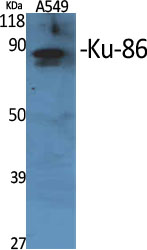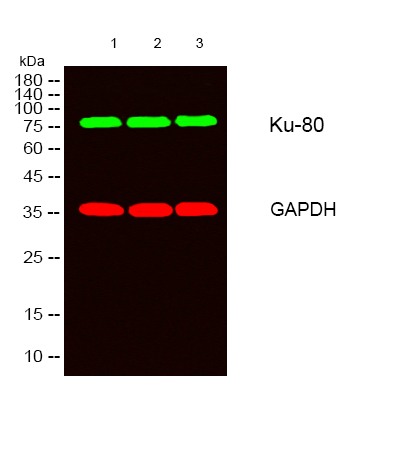IFN-γ rabbit-FC recombinant protein
- Catalog No.:YD3124
- Reactivity:Human;
- Purity:
- >90% as determined by SDS-PAGE
- Protein Name:
- Interferon gamma
- Sequence:
- Amino acid:24-161,with rabbit FC tag.
- Formulation:
- Phosphate-buffered solution
- Storage Stability:
- -15°C to -25°C/1 year(Avoid freeze / thaw cycles)
- Other Name:
- IFNG;Interferon gamma;IFN-gamma;Immune interferon
- Background:
- This gene encodes a soluble cytokine that is a member of the type II interferon class. The encoded protein is secreted by cells of both the innate and adaptive immune systems. The active protein is a homodimer that binds to the interferon gamma receptor which triggers a cellular response to viral and microbial infections. Mutations in this gene are associated with an increased susceptibility to viral, bacterial and parasitic infections and to several autoimmune diseases. [provided by RefSeq, Dec 2015],
- Function:
- disease:In Caucasians, genetic variation in IFNG is associated with the risk of aplastic anemia (AA) [MIM:609135]. AA is a rare disease in which the reduction of the circulating blood cells results from damage to the stem cell pool in bone marrow. In most patients, the stem cell lesion is caused by an autoimmune attack. T-lymphocytes, activated by an endogenous or exogenous, and most often unknown antigenic stimulus, secrete cytokines, including IFN-gamma, which would in turn be able to suppress hematopoiesis.,function:Produced by lymphocytes activated by specific antigens or mitogens. IFN-gamma, in addition to having antiviral activity, has important immunoregulatory functions. It is a potent activator of macrophages, it has antiproliferative effects on transformed cells and it can potentiate the antiviral and antitumor effects of the type I interferons.,online information:Interferon ga
- Subcellular Location:
- Secreted.
- Expression:
- Released primarily from activated T lymphocytes.

